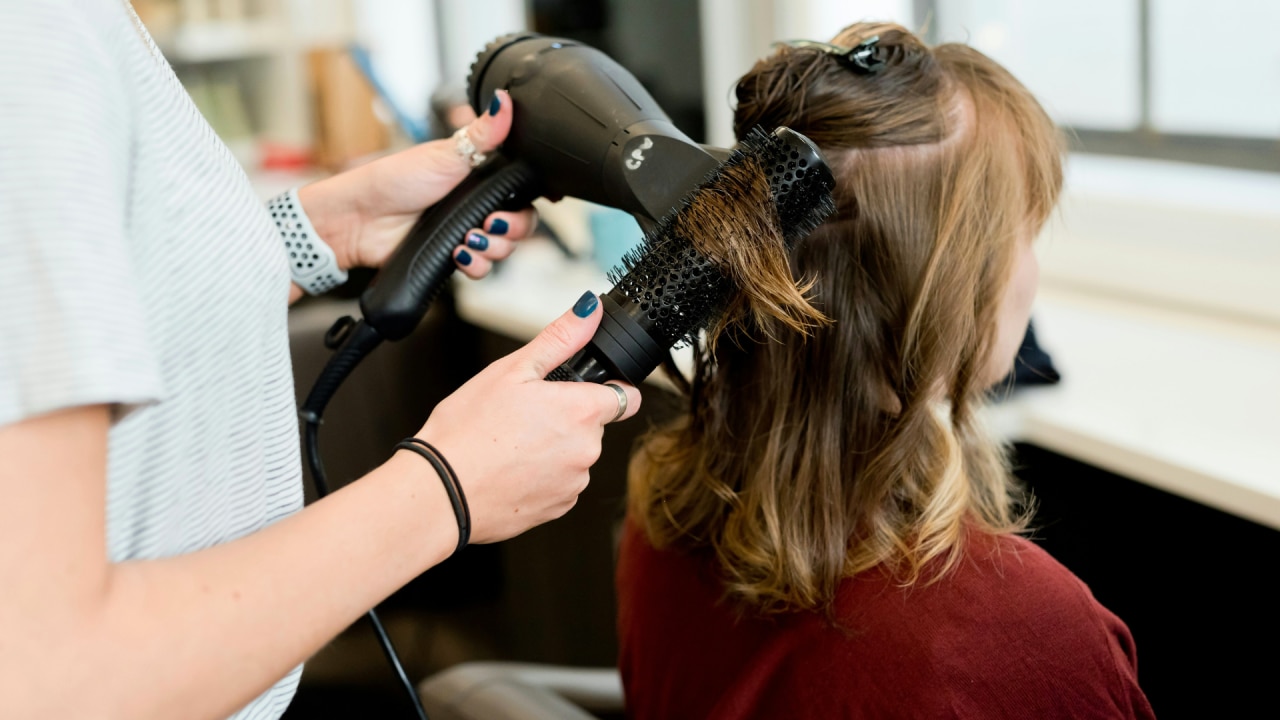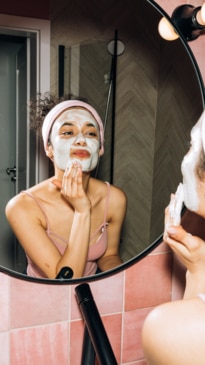
Do you use heated tools after running product through your hair? New research shows the chemical molecules could cause significant health problems when heated.
Cyclic volatile methyl siloxanes (cVMS), commonly found in hair products, are known for shining and smoothing tresses — desirable qualities when you’re trying to tame frizz and prevent tangles.
But a new study published this month by the American Chemical Society suggests that when these molecules are heated by a hair straightener or curling wand, they might spark long-term negative consequences for personal and environmental health.

Study participants used their typical hair products — including creams, sprays and oils — and heating tools in a controlled home environment.
Researchers measured the emissions of cVMS and other volatile organic compounds (VOCs), a class of chemicals that can be harmful, with some even known to cause cancer.
“Indoor hair care routines can have long-term impacts on inhalation exposures to VOCs and the urban atmospheric environment,” the study authors wrote, noting that emissions “could potentially impact outdoor atmospheric chemistry.”
Among cVMS compounds, researchers documented a notable uptick in emissions of the chemicals decamethylcyclopentasiloxane (D5) and octamethylcyclotetrasiloxane (D4) during their trials.
D4 and D5 have been associated with “fatal liver and lung damage in mice” and “adverse effects on the respiratory tract, liver, and nervous system of laboratory animals,” respectively.
Product type, hair length, and the type and temperature of the styling tool affected emissions. Longer hair and higher temperatures meant more VOCs.
The researchers noted that turning on an exhaust fan helped clear the air within 20 minutes, but this practice could affect outdoor air quality in densely populated cities.
“Surveys on different population groups indicate 16 to 70% of participants use leave-on hair care or hair styling products,” the scientists wrote.
“Considering an average use frequency of [hair care products] between 2 and 5 times per week based on surveys on usage patterns and assuming that 10% of [these products] are siloxane-based, the total indoor-to-outdoor emission of D5 could reach 0.4 to 6 tons per year in the US,” they concluded.
The study authors encourage further research on the long-term human health effects of siloxane exposure.
Other recent hair-raising studies found chemicals in shampoo and hair dyes can raise the risk for serious diseases.
This story was originally published on NYPost.com as Hair products, styling tools can pose significant health risks, experts warn